
 |
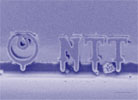 |
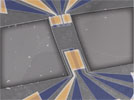 |
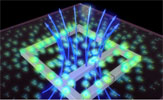 |
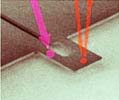 |
 |
 |
 Home
Home |
 People
People |
 Publications
Publications |
 Positions
Positions |
 Contact
Contact |
 Link
Link |
 MEMS/NEMS MEMS/NEMS |
 Superconducting Quantum Circuits Superconducting Quantum Circuits |
 Nanofabrication Nanofabrication |
| Superconducting Quantum Circuits |
| Motivation |
|
Our group investigates a superconducting qubit toward the realization of quantum information processing. A superconducting qubit is known to provide excellent controllability. Reliable and fast manipulations of superconducting qubits have already been demonstrated. Actually, one can perform several gate operations within tens of nanoseconds by using a resonant microwave field. Also, high fidelity single-qubit measurement such as Josephson bifurcation amplifier (JBA) is available in the current technology. The JBA has advantages in its readout speed, high sensitivity, low backaction, and absence of on-chip dissipative process. All these properties of superconducting qubits are prerequisite for scalable quantum information processing.
|
| Originality |
|
We aim to build interfaces between superconducting circuits and several other systems. Every system has its own advantage and disadvantage, and so it would seem natural to form hybrid systems to obtain the best of two worlds. Especially, we explore coherent coupling between a superconducting flux qubit and other physical systems such as an electron spin ensemble, microwave cavities and nano-mechanical resonators.
|
| Impact |
|
Coherent manipulations of hybrid system would be crucial for the realization of quantum information processing including quantum computation, quantum repeater, and quantum metrology. Superconducting qubits show a short coherence time due to a large coupling with the environment. However, coupling a superconducting qubit with other long-lived quantum system could potentially overcome this problem. Such hybridisation provides us with both controllability and long coherence time, and this would enable large scale quantum information processing.
|
| Recent Activities |
|
Observation of Collective Coupling between an Engineered Ensemble of Macroscopic Artificial Atoms and a Superconducting Resonator K. Kakuyanagi, Y. Matsuzaki, C. Deprez, H. Toida, K. Semba, H. Yamaguchi, W. J. Munro, and S. Saito , Phys. Rev. Lett. 117, 210503 (2016) @ |
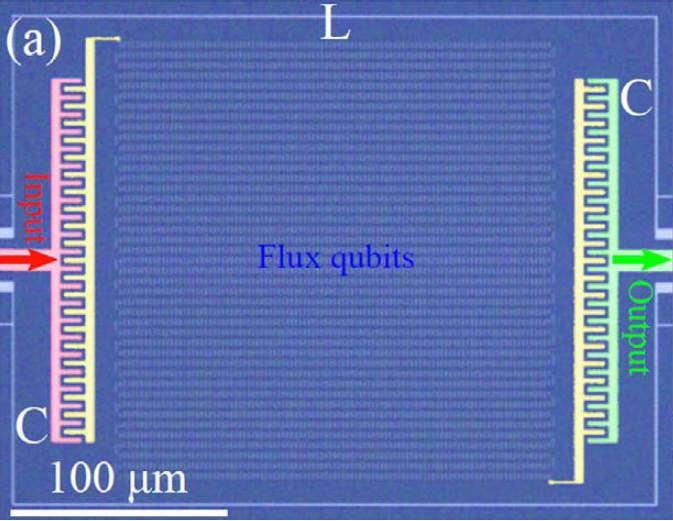 |
The hybridization of distinct quantum systems is now seen as an effective way to engineer the properties of an entire system leading to applications in quantum metamaterials, quantum simulation, and quantum metrology. Recent improvements in both fabrication techniques and qubit design have allowed the community to consider coupling large ensembles of artificial atoms, such as superconducting qubits, to a resonator. Here, we demonstrate the coherent coupling between a microwave resonator and a macroscopic ensemble composed of several thousand superconducting flux qubits, where we observe a large dispersive frequency shift in the spectrum of 250 MHz. We achieve the large dispersive shift with a collective enhancement of the coupling strength between the resonator and qubits. These results represent the largest number of coupled superconducting qubits realized so far. |
|
A strict experimental test of macroscopic realism in a superconducting flux qubit
G. C. Knee, K. Kakuyanagi, M. C. Yeh, Y. Matsuzaki, H. Toida, H. Yamaguchi, S. Saito, A. J. Leggett and W. J. Munro, Nature Commun. 7, 13253 (2016)@ |
| Macroscopic realism is the name for a class of modifications to quantum theory that allow macroscopic objects to be described in a measurement-independent manner, while largely preserving a fully quantum mechanical description of the microscopic world. Objective collapse theories are examples which aim to solve the quantum measurement problem through modified dynamical laws. Whether such theories describe nature, however, is not known. Here we describe and implement an experimental protocol capable of constraining theories of this class, that is more noise tolerant and conceptually transparent than the original Leggett-Garg test. We implement the protocol in a superconducting flux qubit, and rule out (by ~84 s.d.) those theories which would deny coherent superpositions of 170 nA currents over a ~10 ns timescale. Further, we address the clumsiness loophole by determining classical disturbance with control experiments. Our results constitute strong evidence for the superposition of states of nontrivial macroscopic distinctness. | 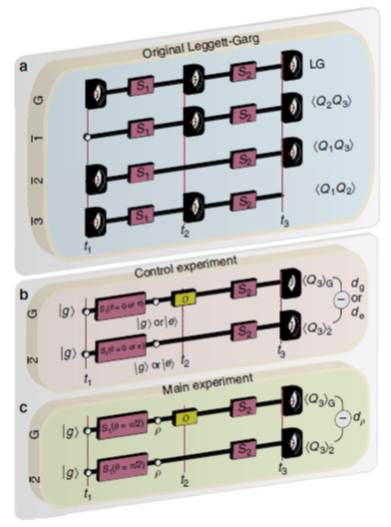 |
|
Superconducting qubit-oscillator circuit beyond the ultrastrong-coupling regime F. Yoshihara, T. Fuse, S. Ashhab, K. Kakuyanagi, S. Saito and K. Semba , Nature Phys. 13, 44 (2017) @ |
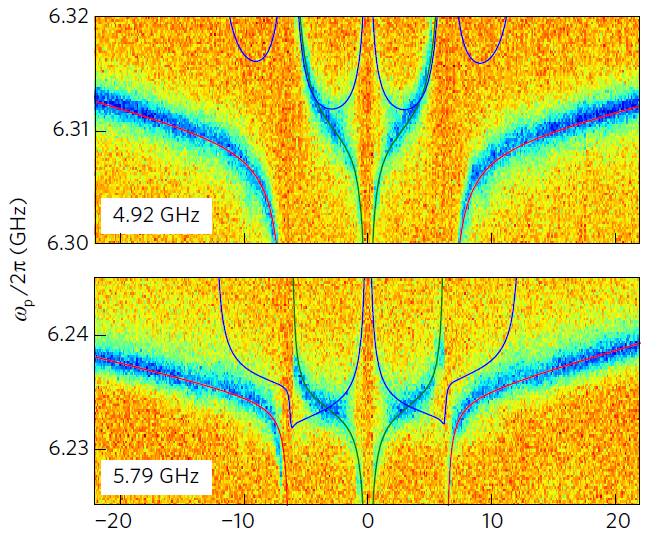 |
The interaction between an atom and the electromagnetic field inside a cavity has played a crucial role in developing our understanding of lightmatter interaction, and is central to various quantum technologies, including lasers and many quantum computing architectures. Superconducting qubits have allowed the realization of strong and ultrastrong coupling between artificial atoms and cavities. If the coupling strength g becomes as large as the atomic and cavity frequencies (Delta and omega, respectively), the energy eigenstates including the ground state are predicted to be highly entangled. There has been an ongoing debate over whether it is fundamentally possible to realize this regime in realistic physical systems. By inductively coupling a flux qubit and an LC oscillator via Josephson junctions, we have realized circuits with g/omega ranging from 0.72 to 1.34 and g/Delta double greater than 1. Using spectroscopy measurements, we have observed unconventional transition spectra that are characteristic of this new regime. Our results provide a basis for ground-state-based entangled pair generation and open a new direction of research on strongly correlated lightmatter states in circuit quantum electrodynamics. |
|
Observation of quantum Zeno effect in a superconducting flux qubit
K Kakuyanagi, T Baba, Y Matsuzaki, H Nakano, S Saito, and K Semba, New J. Phys. 17 063035 (2015)@ |
| When a quantum state is subjected to frequent measurements, the time evolution of the quantum state is frozen. This is called the quantum Zeno effect. Here, we observe such an effect by performing frequent discrete measurements in a macroscopic quantum system, a superconducting quantum bit. The quantum Zeno effect induced by discrete measurements is similar to the original idea of the quantum Zeno effect. By using a Josephson bifurcation amplifier pulse readout, we have experimentally suppressed the time evolution of Rabi oscillation using projective measurements, and also observed the enhancement of the quantum state holding time by shortening the measurement period time. This is a crucial step to realize quantum information processing using the quantum Zeno effect. | 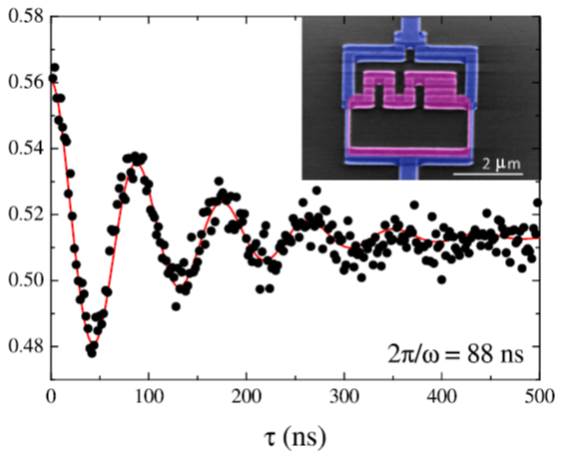 |
|
Observation of dark states in a superconductor diamond quantum hybrid system X. Zhu, Y. Matsuzaki, R. Amsüss, K. Kakuyanagi, T. Shimo-Oka, N. Mizuochi, K. Nemoto, K. Semba, W. J. Munro, and S. Saito , Nat. Commun. 5 3524 (2014) @ |
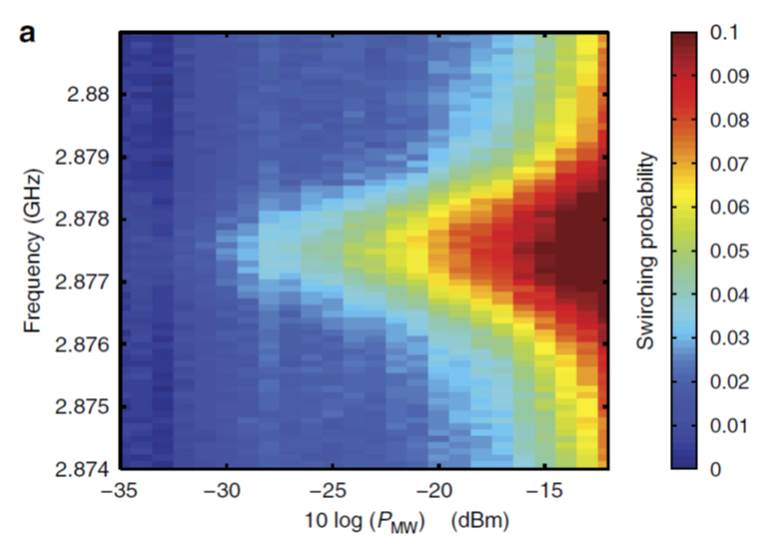 |
The hybridization of distinct quantum systems has opened new avenues to exploit the best properties of these individual systems. Superconducting circuits and electron spin ensembles are one such example. Strong coupling and the coherent transfer and storage of quantum information has been achieved with nitrogen vacancy centres in diamond. Recently, we have observed a remarkably sharp resonance (~1 MHz) at 2.878 GHz in the spectrum of flux qubit negatively charged nitrogen vacancy diamond hybrid quantum system under zero external magnetic field. This width is much narrower than that of both the flux qubit and spin ensemble. Here we show that this resonance is evidence of a collective dark state in the ensemble, which is coherently driven by the superposition of clockwise and counter-clockwise macroscopic persistent supercurrents flowing in the flux qubit. The collective dark state is a unique physical system and could provide a long-lived quantum memory. |
|
Towards Realizing a Quantum Memory for a Superconducting Qubit: Storage and Retrieval of Quantum States
S. Saito, X. Zhu, R. Amsüss, Y. Matsuzaki, K. Kakuyanagi, T. Shimo-Oka, N. Mizuochi, K. Nemoto, W. J. Munro, and K. Semba, Phys. Rev. Lett. 111, 107008 (2013)@ |
| We have built a hybrid system composed of a superconducting flux qubit (the processor) and an ensemble of nitrogen-vacancy centers in diamond (the memory) that can be directly coupled to one another, and demonstrated how information can be transferred from the flux qubit to the memory, stored, and subsequently retrieved. We have established the coherence properties of the memory and succeeded in creating an entangled state between the processor and memory, demonstrating how the entangled states coherence is preserved. Our results are a significant step towards using an electron spin ensemble as a quantum memory for superconducting qubits. | 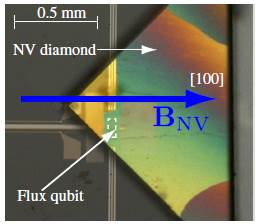 |
|
Experimental analysis of the measurement strength dependence of superconducting qubit readout using a Josephson bifurcation readout method
K Kakuyanagi, S Kagei, R Koibuchi, S Saito, A Lupascu, K Semba, and H Nakano , New J. Phys. 15 043028 (2013) @ |
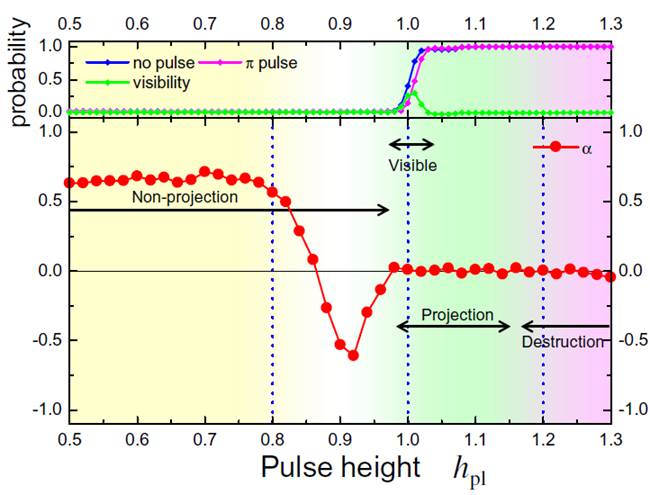 |
We succeeded in controlling the measurement strength of a macroscopic quantum system, namely a persistent current quantum bit (qubit), by using a transmission line type Josephson bifurcation amplifier (JBA: an ac-driven superconducting quantum interferometer device) as a probe. By employing a special pulse sequence, we found that the weighted average of the Ramsey fringe visibility (a-value) can be used as an indicator of quantum state projection. The sudden change in the a-value magnitude at around the threshold suggests that an entangled state of the qubitJBA composite system settles in one of the two possible classically correlated qubitJBA states caused by strong decoherence. This is an important result in terms of understanding the mechanisms of quantum state measurement. |
|
Enhanced energy relaxation process of a quantum memory coupled
to a superconducting qubit
Y. Matsuzaki, and H. Nakano , Phys. Rev. B 86, 184501 (2012)@ |
| For quantum information processing, each physical system has a different advantage as regards implementation, so hybrid systems that benefit from the advantage of several systems would provide a promising approach. One common hybrid approach involves combining a superconducting qubit as a controllable qubit and another quantum system with a long coherence time as a memory qubit. The use of a superconducting qubit gives us excellent controllability of the quantum states, and the memory qubit is capable of storing information for a long time. It has been believed that selective coupling can be realized between a superconducting qubit and a memory qubit by tuning the energy splitting between them. However, we have shown that this detuning approach has a fundamental drawback as regards energy leakage from the memory qubit. Even if the superconducting qubit is effectively separated by reasonable detuning, a non-negligible incoherent energy relaxation in the memory qubit occurs via residual weak coupling when the superconducting qubit is affected by severe dephasing. This energy transport from the memory qubit to the control qubit can be interpreted as the appearance of the antiquantum Zeno effect induced by the fluctuation in the superconducting qubit. We also discuss possible ways to avoid this energy relaxation process, which is feasible with existing technology. | 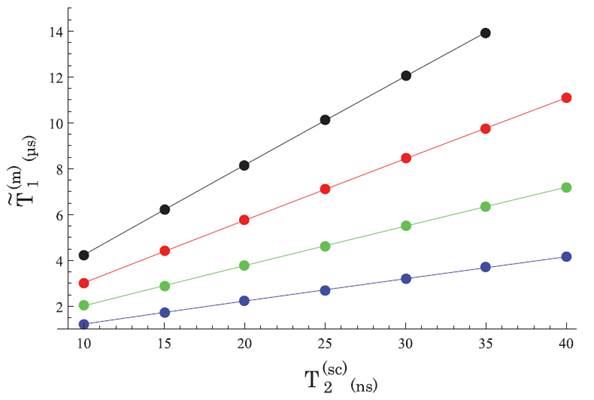 |
|
Coherent coupling of a superconducting flux qubit to an electron spin ensemble in diamond
X. Zhu, S. Saito, A. Kemp, K. Kakuyanagi, S. Karimoto, H. Nakano, W. J. Munro, Y. Tokura, M. S. Everitt, K. Nemoto, M. Kasu, N. Mizuochi & K. Semba, Nature 478, 221 (2011) @ |
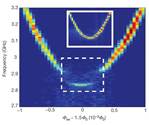 |
During the past decade, research into superconducting quantum bits (qubits) based on Josephson junctions has made rapid progress. Many foundational experiments have been performed and superconducting qubits are now considered one of the most promising systems for quantum information processing. However, the experimentally reported coherence times are likely to be insufficient for future large-scale quantum computation. A natural solution to this problem is a dedicated engineered quantum memory based on atomic and molecular systems. The question of whether coherent quantum coupling is possible between such natural systems and a single macroscopic artificial atom has attracted considerable attention since the first demonstration of macroscopic quantum coherence in Josephson junction circuits. Here we report evidence of coherent strong coupling between a single macroscopic superconducting artificial atom (a flux qubit) and an ensemble of electron spins in the form of nitrogenvacancy colour centres in diamond. Furthermore, we have observed coherent exchange of a single quantum of energy between a flux qubit and a macroscopic ensemble consisting of about 3×10^7 such colour centres. This provides a foundation for future quantum memories and hybrid devices coupling microwave and optical systems. |
|
Superconducting qubit as a quantum transformer routing entanglement between a microscopic quantum memory and a macroscopic resonator
A. Kemp, S. Saito, W. J. Munro, K. Nemoto, and K. Semba , Phys. Rev. B 84, 104505 (2011)@ |
| We demonstrate experimentally the creation and measurement of an entangled state between a microscopic two-level system (TLS), formed by a defect in an oxide layer, and a macroscopic superconducting resonator, where their indirect interaction is mediated by an artificial atom, a superconducting persistent current qubit (PCQB). Under appropriate conditions, we found the coherence time of the TLS, the resonator, and the entangled state of these two are significantly longer than the Ramsey dephasing time of PCQB itself. This demonstrates that a PCQB can be used as a quantum transformer to address high coherence microscopic quantum memories by connecting them to macroscopic quantum buses. | 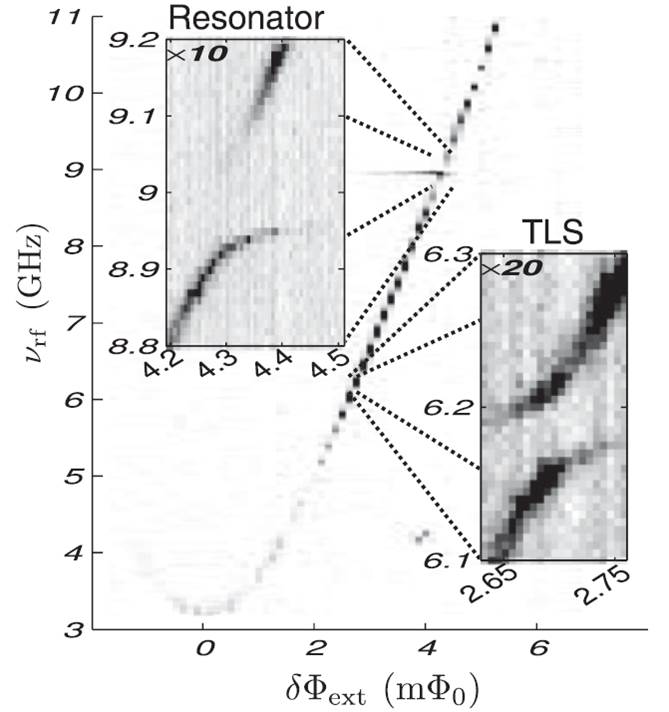 |